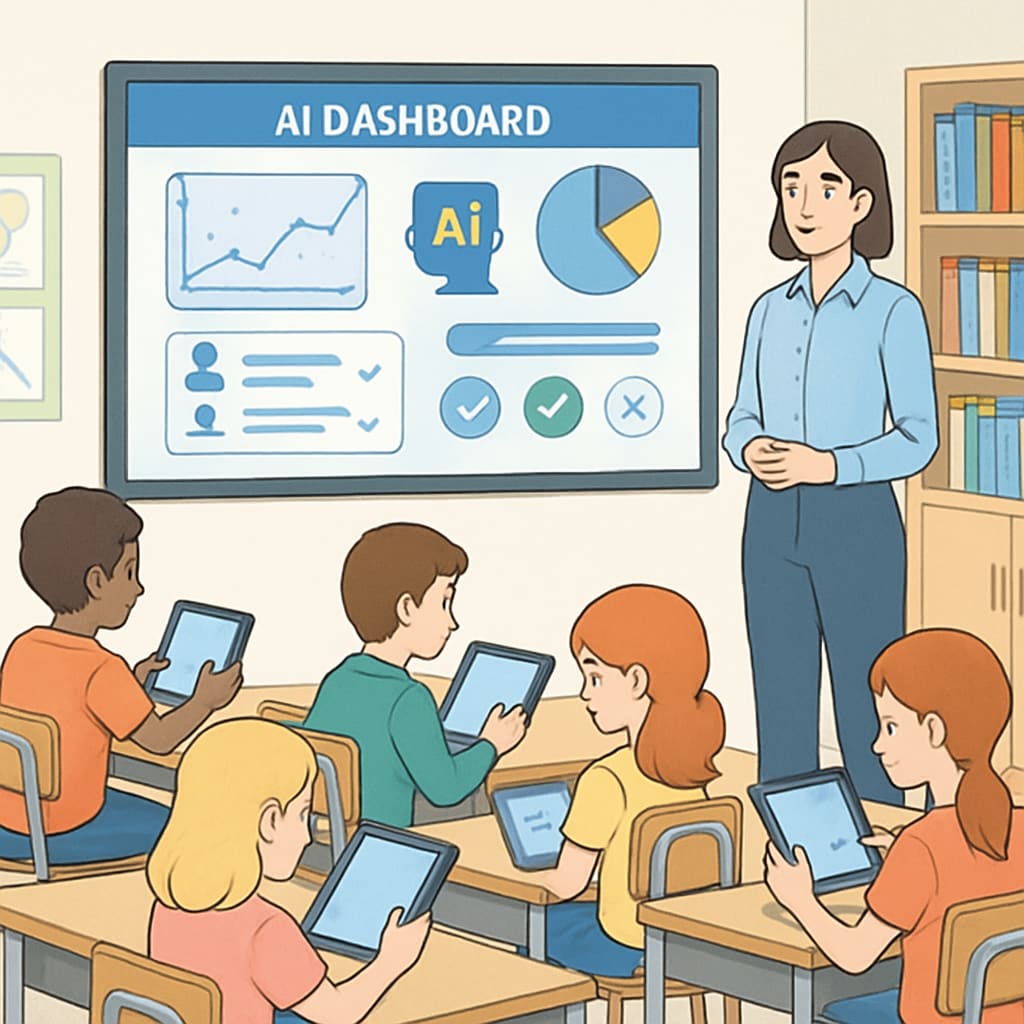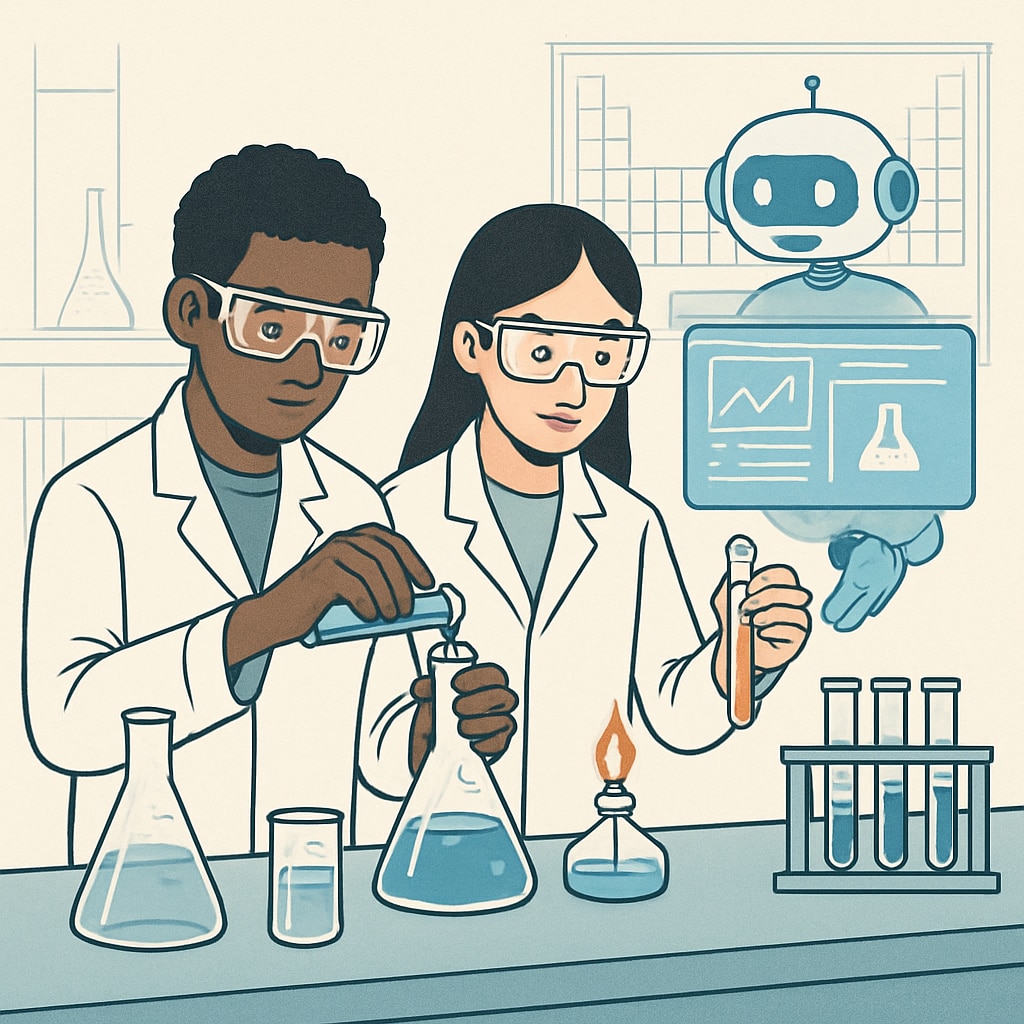Artificial intelligence (AI) is driving transformative education trends, marking a significant shift in how K-12 students learn and teachers teach. As we approach 2030, the integration of AI into education systems is expected to grow exponentially, offering unprecedented opportunities and challenges. From personalized learning experiences to the evolving roles of educators, AI is reshaping the landscape of education. This article examines the current state of AI applications in K-12 education, its projected growth by 2030, and actionable strategies for educators to adapt to this new era.
AI’s Role in Transforming K-12 Education
The role of AI in education is becoming increasingly significant. Currently, AI-powered tools are being used to enhance personalized learning, enabling students to learn at their own pace and in their preferred style. For example, tools like adaptive learning platforms analyze student performance in real time and adjust the content accordingly. This ensures that students receive tailored instruction, maximizing their potential.
In addition to personalized learning, AI is also revolutionizing administrative tasks. Teachers and school administrators are leveraging AI tools to automate grading, track student progress, and manage scheduling efficiently. By reducing the burden of routine tasks, educators can focus more on teaching and mentoring students.

The AI-Driven Education Market: A Booming Trend
The global AI-driven education market is poised for significant growth. According to industry reports, the market is projected to reach billions in value by 2030, driven by increasing investment in educational technology and the growing demand for innovative learning solutions. Governments and private organizations worldwide are recognizing the potential of AI to address educational challenges, such as bridging learning gaps and improving inclusivity.
One of the most promising trends is the integration of AI in STEM (Science, Technology, Engineering, and Mathematics) education. AI-powered simulations and virtual labs allow students to engage in hands-on learning experiences that were previously limited by physical resources. For example, students can now conduct complex chemistry experiments in a virtual environment, reducing costs and safety risks.

Future Projections: What K-12 Education May Look Like in 2030
By 2030, AI is expected to have a profound impact on K-12 education. Some key predictions include:
- Hyper-Personalized Learning: AI will enable even more precise tailoring of educational content, catering to the unique needs of each student.
- AI-Powered Teachers’ Assistants: Virtual assistants will become an integral part of classrooms, helping teachers manage their workload and provide real-time support to students.
- Global Accessibility: AI-driven platforms will make quality education accessible to students in remote and underserved regions, breaking geographical barriers.
- Data-Driven Decision Making: Schools will increasingly use AI analytics to make data-driven decisions about curriculum design, resource allocation, and student interventions.
While these advancements are promising, they also raise concerns about privacy, data security, and the digital divide. Policymakers and educators must collaborate to address these challenges effectively.
Strategies for Educators to Adapt to AI-Driven Transformation
To thrive in an AI-driven education ecosystem, educators need to embrace change and develop new skills. Here are some strategies to consider:
- Continuous Learning: Teachers should stay updated on emerging AI technologies and how they can be integrated into their teaching practices.
- Collaboration with AI Tools: Rather than viewing AI as a replacement, educators should see it as a collaborator that enhances their teaching capabilities.
- Focus on Soft Skills: As AI handles routine tasks, teachers can focus on developing students’ critical thinking, creativity, and emotional intelligence.
- Advocacy for Ethical AI Use: Educators should advocate for ethical AI practices, ensuring that student data is used responsibly and inclusively.
By adopting these strategies, educators can ensure that they remain at the forefront of this educational transformation, empowering their students to succeed in an AI-driven world.
As we move toward 2030, the collaboration between AI and education will continue to evolve. While challenges remain, the opportunities far outweigh the risks. By embracing AI, educators, students, and policymakers can unlock a future where learning is more accessible, personalized, and effective than ever before.
Readability guidance: Short paragraphs and lists ensure clarity. The use of active voice and transitional phrases enhances flow. The text incorporates external references for credibility and adheres to SEO guidelines by evenly distributing key phrases.


